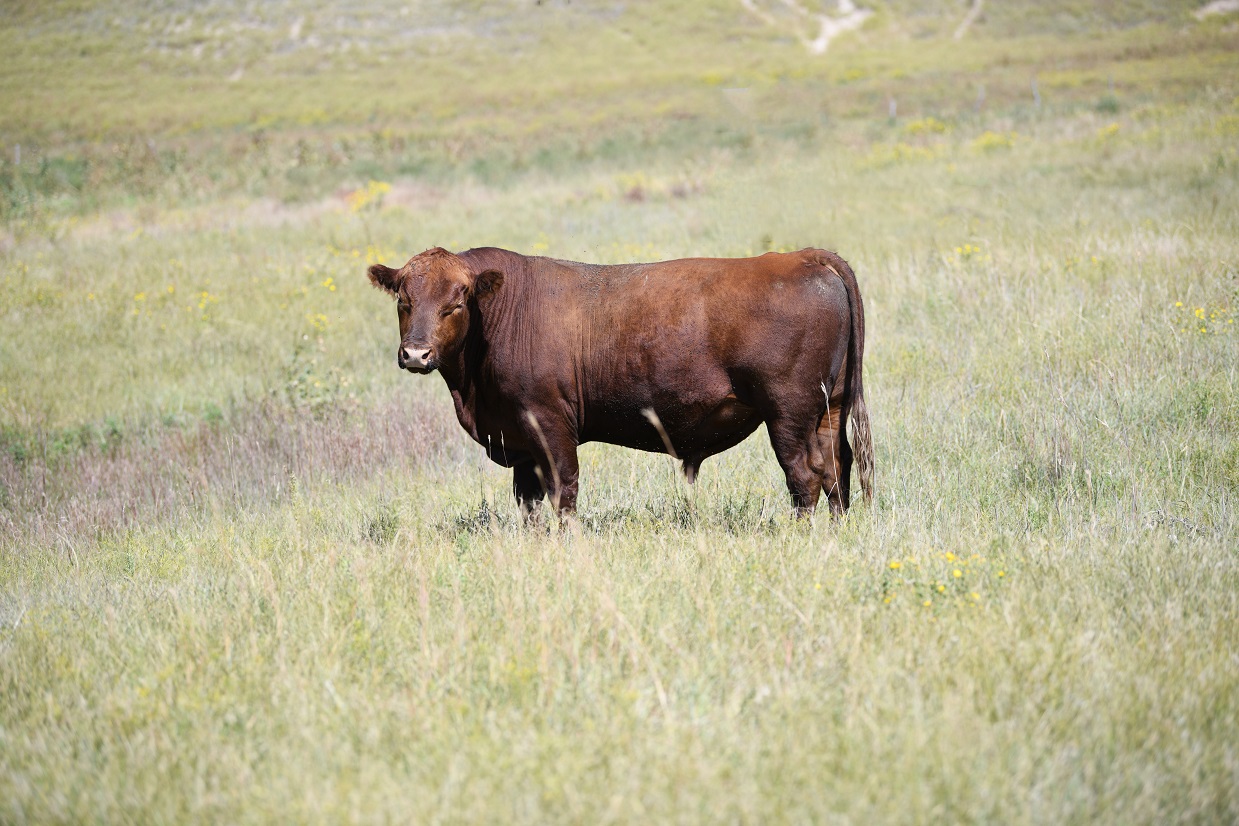Karla H. Wilke, UNL Cow/Calf Systems and Stocker Management

Although the breeding season for many herds is still a few months away, it is time to be evaluating bull body condition. Body condition is just as important in bulls as it is in cows. Research has shown that bulls in a body condition 5-6 have better semen quality than those in a 4 or 7. Much like cows, bull body condition needs to be evaluated as fat cover over the front ribs, brisket, and tail head (Body Condition Scoring Beef Cows, EC 281) making sure that gut fill does not impact the score given.
During the breeding season, bulls may lose 100-200 pounds (which could translate to 1-2 body condition scores (BCS)), therefore, having them in a BCS 5.5-6.5 before the breeding season starts is critical. Starting to evaluate bull BCS 90 days before breeding season will allow producers time to add the necessary weight to bulls before the busy season. Prior to the breeding season is typically a time when the bulls are fed hay as green grass is probably not available. If a 1300 pound yearling bull was fed about 35 pounds of meadow hay that was 56% total digestible nutrients (TDN) and 10% crude protein (CP), this bull would likely maintain his weight, but would likely not gain any. If the producer wants this bull to gain 100 pounds in 90 days, the bull would need 35 pounds of the meadow hay and 1 pound of a distillers based cube. However, if the producer needs this bull to gain 100 pounds in only 60 days, the bull would need 3.5 pounds of a distillers based cube on top of about 31 pounds of the meadow hay. If the producer fed 29.5 pounds of millet hay (54% TDN, 8% CP) and 14 pounds of corn silage (68% TDN, 8% CP) for 90 days, the bull would gain about 100 pounds. However, if the producer waited until 60 days before breeding, the producer would need to feed 23 pounds of the millet hay, 27 pounds of corn silage, and 4 pounds of wet distillers grains (108% TDN, 30% CP) to help the young bull gain 100 pounds. Mature bulls often weigh between 1500 and 2000 pounds, so feed intake would need to be increased accordingly. Additional considerations for helping bulls maintain wellness and gain weight is to use windbreaks and bedding to reduce body heat loss and prevent frostbite on testicles.
Many times at weaning when cows are pregnancy checked and producers are disappointed with the results, the assumption is typically that the cows were thin and not cycling well at breeding time. While this may be part of the issue, seldom is the condition of the bulls prior to breeding time evaluated to see if body condition of the bulls could be a potential issue.
Evaluating the body condition score of bulls at least 90 days before breeding and feeding them to gain weight so that they are in a BCS 5.5 to 6.5 at the onset of breeding can help keep bulls active, healthy, and productive through the breeding season. Sixty days prior to the start of the breeding season is probably the last chance to increase weight and BCS without a substantial increase in energy feeds. Be proactive about monitoring bull condition, especially young bulls. University of Nebraska Extension personnel can assist producers with ration development.
University of Nebraska-Lincoln
